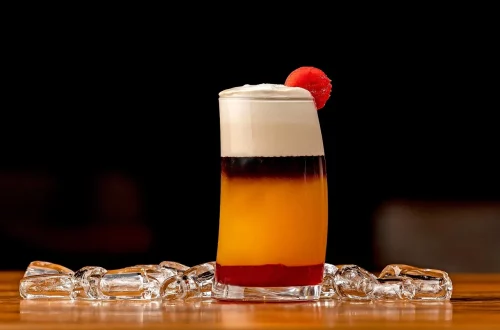
Exploring the Versatility of Four Paddle Techniques in Sports
In the realm of sports, the paddle serves as an essential tool that transcends mere functionality; it embodies a blend of strategy, skill, and technique. From the serene waters of kayaking to the competitive courts of paddle tennis, the paddle plays a crucial role in enhancing performance and providing athletes with a means to express their unique styles. The versatility of paddle techniques is not just about striking a ball or maneuvering through water; it encapsulates the very essence of athleticism.
Understanding the various paddle techniques can significantly influence an athlete’s success. Each technique presents its own set of challenges and advantages, and mastering these can lead to a deeper appreciation of the sport. The ability to adapt and employ different paddle techniques is what sets apart the novice from the seasoned player. As we delve into the multifaceted world of paddle sports, we uncover the nuances that make these techniques indispensable.
Whether you are a beginner looking to improve your skills or a seasoned athlete aiming to refine your approach, exploring the intricacies of paddle techniques can offer invaluable insights. The journey through these techniques not only enhances performance but also enriches the overall experience of engaging with the sport. Let’s dive into the world of paddle techniques and explore their unique contributions to athletic performance.
Understanding the Basics of Paddle Techniques
To truly appreciate the versatility of paddle techniques, one must first grasp the foundational elements of how they function. Paddle sports, whether they involve striking or steering, rely on a combination of grip, stance, and motion. Each element plays a vital role in executing techniques effectively.
The grip is perhaps the most critical aspect. A proper grip ensures better control over the paddle, allowing for precise movements. In sports like table tennis or pickleball, for instance, the grip can vary from a standard handshake to a more complex grip depending on the specific shot being executed. Athletes often spend considerable time perfecting their grip to enhance their performance.
Next comes the stance, which provides the balance and posture needed to execute a technique correctly. An athlete’s stance can significantly affect their power and accuracy. For instance, in kayaking, a low and stable stance can improve the paddler’s control over the kayak, particularly in turbulent waters. On the other hand, a more dynamic stance is essential in sports like paddle tennis, where quick lateral movements are necessary.
Finally, the motion of the paddle itself is crucial to technique execution. Whether it’s a forehand stroke in paddle tennis or a stroke in rowing, the motion involves a complex interplay of body mechanics, timing, and rhythm. Athletes must synchronize their body movements with the paddle’s motion to achieve optimal results. This intricate relationship between grip, stance, and motion forms the basis of all paddle techniques, setting the stage for more advanced applications.
Understanding these fundamentals allows athletes to explore more sophisticated techniques, leading to improved performance across various paddle sports.
The Art of Precision: The Forehand Stroke
One of the most widely recognized paddle techniques is the forehand stroke, essential in numerous sports, including tennis, table tennis, and badminton. This technique exemplifies precision and power, making it a cornerstone for athletes aiming to dominate their respective games.
The forehand stroke begins with proper positioning. Athletes must align their bodies to face the net or the intended target. This position not only facilitates better balance but also allows for a more powerful swing. The grip on the paddle should be firm yet flexible, enabling quick adjustments during play.
As the athlete prepares to execute the stroke, they initiate the movement with a coiling of the torso. This rotation generates power, which is transferred through the arms and into the paddle. Timing is critical; the athlete must make contact with the ball or object at the optimal point in their swing to achieve both speed and accuracy.
Following through after the strike is equally important. A complete follow-through not only ensures better control but also prepares the athlete for the next move, whether it’s returning a shot or repositioning for the next play. Continuous practice of the forehand stroke allows athletes to develop muscle memory, enhancing their ability to execute the technique under pressure.
In sports where quick reflexes are critical, mastering the forehand stroke can be a game-changer. It empowers athletes to dictate the pace of the game, allowing them to engage their opponents effectively. The art of precision embodied in the forehand stroke is a testament to the skillful integration of technique and strategy.
Mastering Control: The Backhand Technique
While the forehand stroke often garners the spotlight, the backhand technique is equally crucial, serving as a foundation for well-rounded gameplay. Athletes who master the backhand can maintain their competitive edge by ensuring a comprehensive skill set that keeps opponents guessing.
The backhand technique involves a different grip and stance compared to the forehand. Athletes typically use a two-handed grip for more control, particularly in fast-paced sports. This grip enables a stronger, more stable strike, which is essential for effective defense and counterattacks.
Positioning is vital for executing a successful backhand. Athletes must pivot their bodies to create an angle that allows for a clean swing. This movement requires agility and awareness, as players must quickly adjust to the trajectory of the incoming ball. Timing is also critical, as the backhand stroke often involves hitting the ball while it is still in motion, demanding quick reflexes and precision.
The motion of the backhand stroke is characterized by its fluidity. Athletes must engage their core and legs to generate power while maintaining control. A common mistake is to rely solely on arm strength, which can lead to inaccuracies. Instead, a synchronized movement involving the entire body enhances the effectiveness of the backhand.
As with the forehand, follow-through is essential in the backhand technique. A complete follow-through not only aids in controlling the ball but also positions the athlete for the next shot. Regular practice of the backhand can lead to significant improvements in an athlete’s overall game, making it a vital technique for any serious paddle sport enthusiast.
Dynamic Movements: The Role of the J-Stroke in Kayaking
In the world of kayaking, the J-stroke is a pivotal technique that showcases the paddle’s versatility. This stroke is designed to provide both propulsion and steering, making it an indispensable tool for kayakers navigating various water conditions.
The J-stroke begins with a standard forward stroke, where the paddle enters the water near the bow of the kayak. As the paddle moves through the water, the kayaker shifts their grip and angle, transitioning into a J-shaped motion. This unique movement not only propels the kayak forward but also allows for directional control, enabling the kayaker to navigate turns and obstacles effectively.
The key to mastering the J-stroke lies in body mechanics. Kayakers must engage their core and use their torso to drive the stroke, rather than relying solely on their arms. This technique minimizes fatigue and maximizes efficiency, allowing for longer periods of paddling without strain.
Timing and rhythm are essential components of the J-stroke. A well-timed stroke can create a seamless transition between propulsion and steering, ensuring that the kayaker maintains momentum while navigating turns. Practicing the J-stroke in various water conditions can enhance a kayaker’s adaptability, making it easier to respond to changing environments.
In addition to its functional benefits, the J-stroke embodies the artistry of kayaking. It allows for smooth, graceful movements that reflect the harmony between the kayaker and the water. As such, mastering the J-stroke not only improves performance but also enriches the overall experience of kayaking.
The Versatile Techniques in Paddle Sports
Exploring the various paddle techniques reveals a rich tapestry of skills that contribute to athletic excellence. Each technique, whether in tennis, badminton, or kayaking, offers unique advantages that can elevate an athlete’s performance.
The versatility of these techniques allows athletes to adapt to different situations, enhancing their ability to compete at higher levels. For instance, a player proficient in both forehand and backhand strokes can effectively respond to a wider range of shots, keeping opponents on their toes. Similarly, a kayaker who masters the J-stroke can navigate complex waterways with ease, showcasing their skill and confidence.
Moreover, the integration of different techniques fosters a deeper understanding of the sport. Athletes who experiment with various strokes and grips often discover new strategies that can be game-changers in competitive settings. This exploration not only improves performance but also adds an element of creativity to the sport, allowing athletes to express their individuality.
In conclusion, the versatility of paddle techniques in sports is a testament to the intricate relationship between skill, strategy, and athleticism. By mastering these techniques, athletes can unlock new levels of performance and enjoyment in their respective sports. Regardless of the paddle sport, the techniques explored here provide a foundation for continuous improvement, paving the way for success on and off the court or water.
Remember, this article is for informational purposes only and should not be considered medical advice. For any health-related concerns, please consult a qualified healthcare professional.




